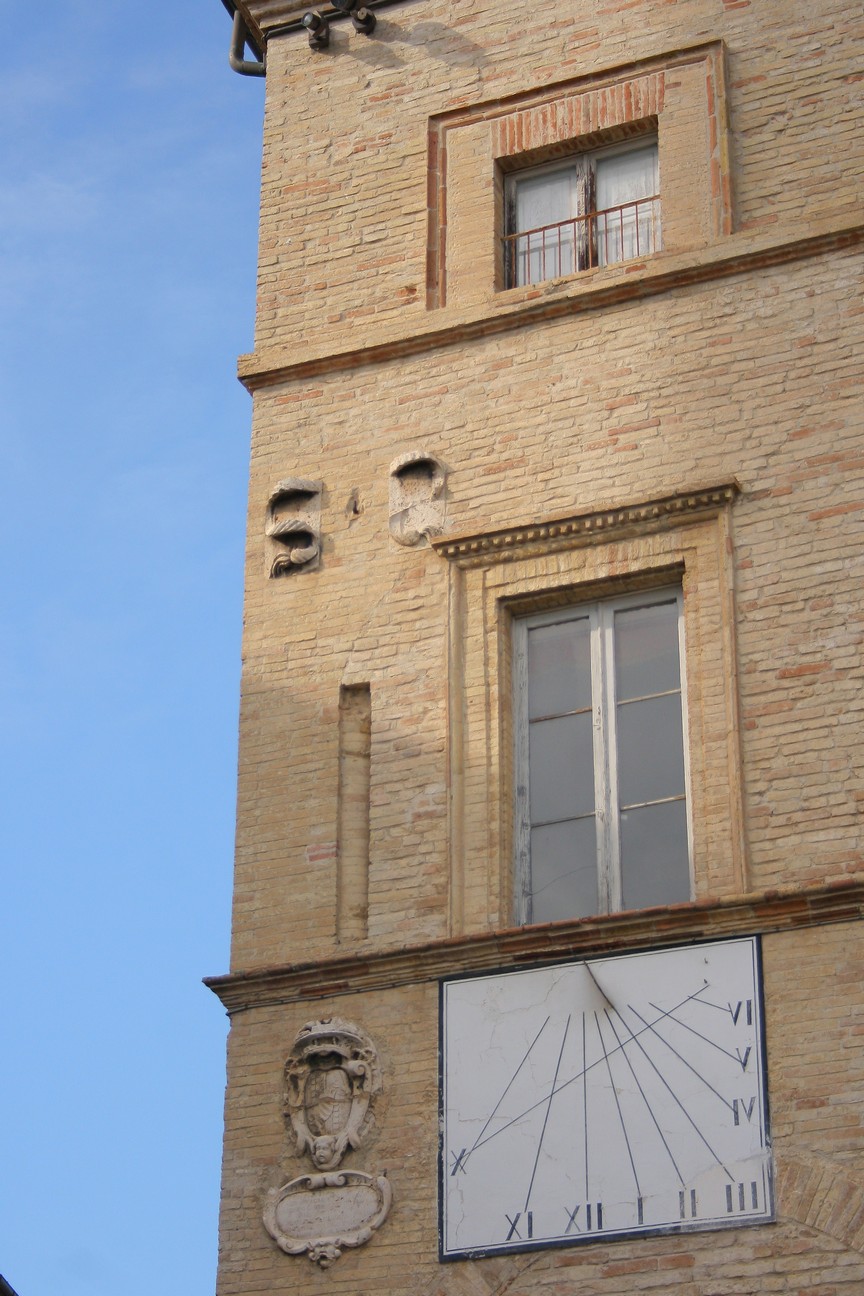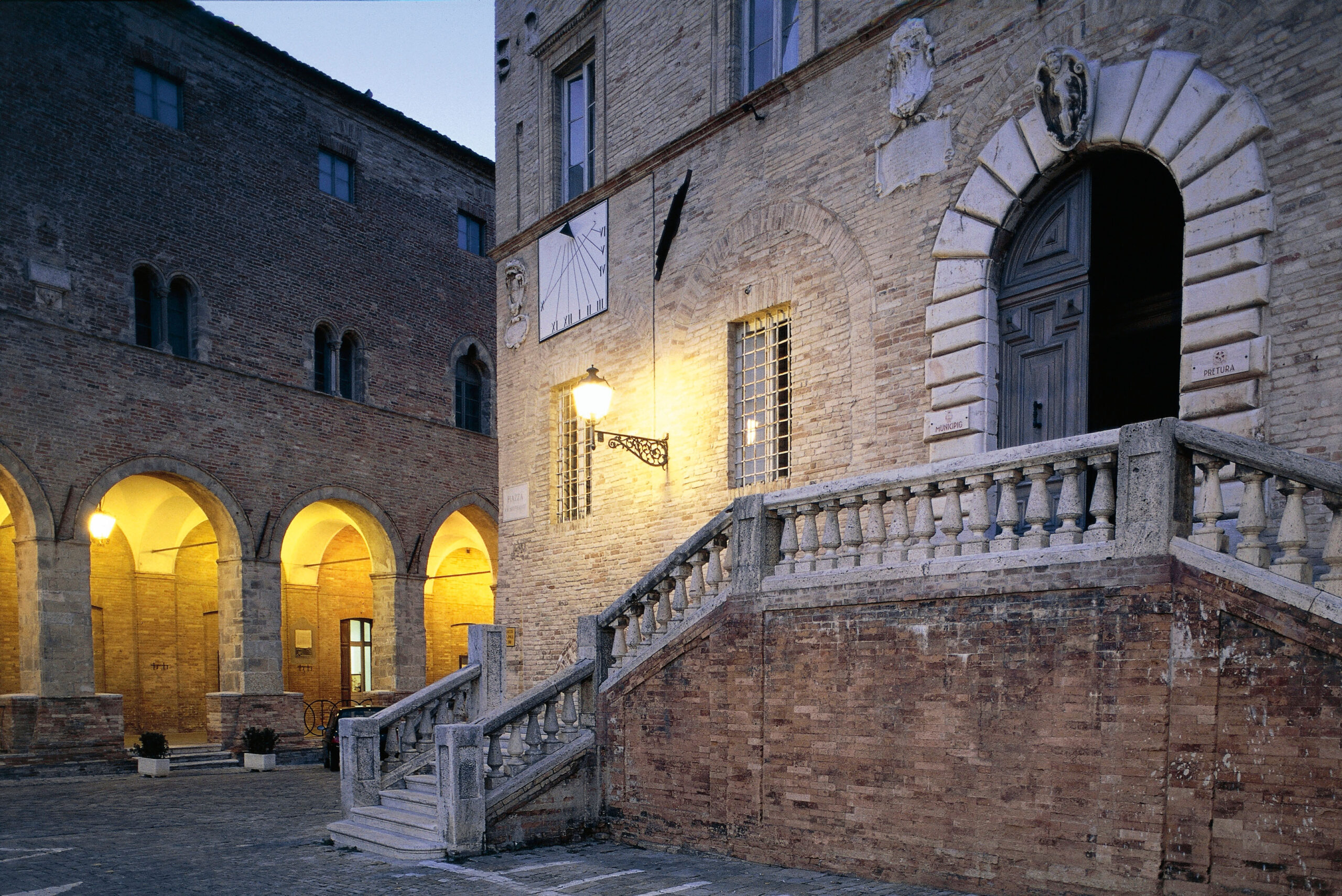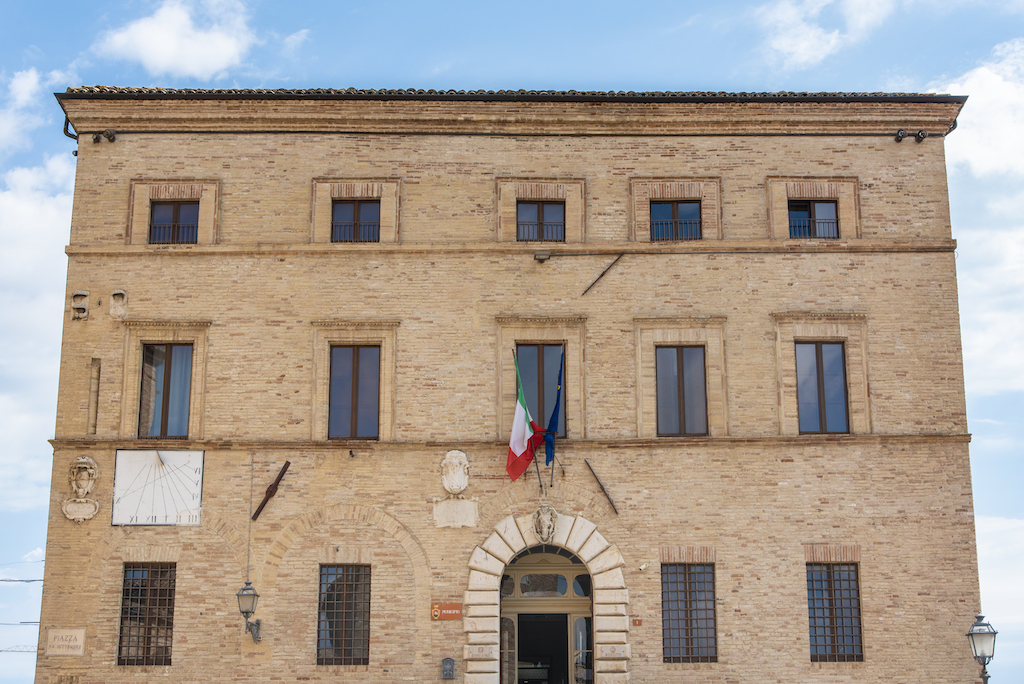The Municipal Palace built in the 12th century has been subject to various vicissitudes; completely restored in the 17th century, it was again remodeled in the 19th century, and today retains almost nothing of its original architecture. The main façade is the one facing Piazza XX Settembre, and features a double staircase of 15 steps, an ashlar stone portal surmounted by the municipal coat of arms (a lion on five hills), traces of two closed arches of the "Loggia degli Anziani," two coats of arms with epigraphs commemorating the merits of governors Tommaso Acquaviva (1662) and Giovanni Mattei (1718), and a wall sundial (sundial). On the second floor, in the first room on the left, is a fragment (head of St. Vincent Ferreri) of the frescoes executed by Giacomo da Campli (15th cent.); by the same author is the diptych in the adjacent room (currently used as the Justice of the Peace archives), depicting the Virgin nursing her Son and St. Mary Magdalene (dating: Aug. 6, 1461). In the hearing room (until 1999 of the Magistrate's Court, and since March 26, 2001 of the Justice of the Peace), "Icarus," tempera executed on November 3, 2000 by Felice Levini (born 1956 in Rome). The second floor is occupied by a number of municipal offices, and almost all the ceilings are decorated; the one in the Hall of Representation was painted by Dionisio Rossi; the same hall holds a number of portraits of Ripan personalities (17th-18th centuries); the marble bust of Victor Emmanuel II (1879), the work of the Sienese sculptor Giovanni Duprè. The third floor is occupied by two municipal offices and two archives, which constitute a valuable source of news not only for the city but also for the surrounding area, given the consistency of the documents; they are: municipal historical archives (reorganized and computerized in 1989-93 by professors Emilio Tassi and Walter Michelangeli), the notarial archives mandamentale.


